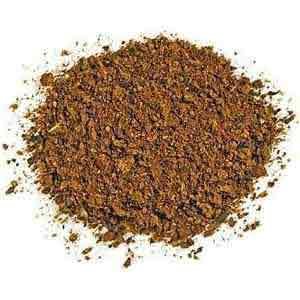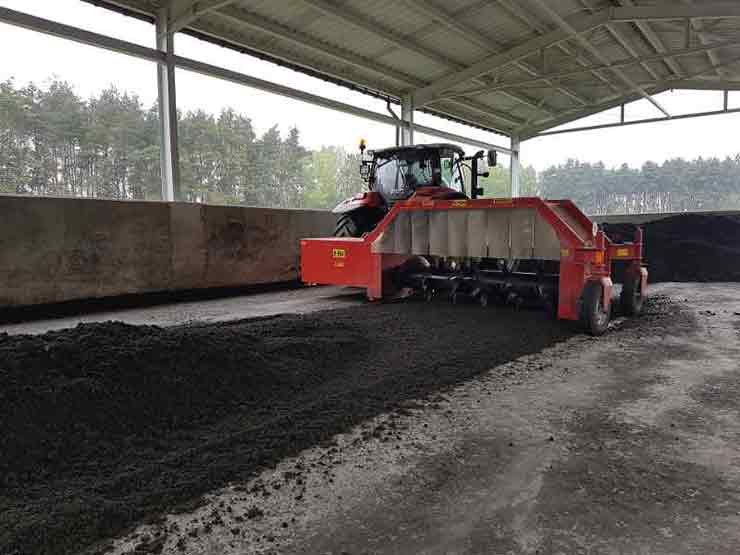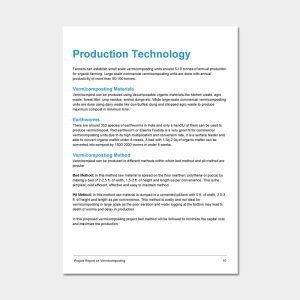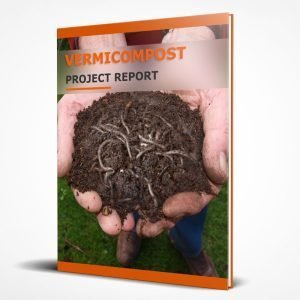Organic manure is being increasingly popular for organic farming. There are different types of organic manures or fertilizers. Learn how to make different types of organic manure and use them properly.
‘Healthy eating, happy eating’ has become the latest mantra. People nowadays want to eat healthy and moreover eat what is directly derived from the lap of nature. In other words, people are growing increasingly aware of food that is grown without any use of synthetic fertilizers and chemicals- grown organically. Therefore, more and more farmers are switching over to organic farming.
Basic Principle of Organic Farming
The most principle of organic farming is the fact that it treats soil as a living entity. The fertility of the soil is never compromised upon and crops that are grown in the soil are indigenous crops. Crop rotation is practiced very religiously in organic farming so that the health of the soil is maintained. As per the International Federation of Organic Agriculture Movement, organic farming is based on the principles of health, ecology, fairness and care in that order.
What is Organic Manure?

Organic manure is nutrient derived from organic sources like animal waste, vegetable compost, agricultural residues, human excreta, etc. Basically they are natural materials that decay and get mixed with the soil thereby increasing its fertility. The main idea behind providing organic manure is to break down the complex inorganic nutritional supplements into simpler organic ones that can be easily absorbed and assimilated by the plants. Manures having a low nutrient content have residual effect for a longer period of time. It also improves the quality of the soil. Some of the major manure sources are:
- Human waste like urine, night soil, sludge, sewage, slurry and other organic town refuse.
- Cattle waste like urine, dung, slurry from biogas plants.
- Agricultural wastes like crop residue, trash, stubble, twigs, dry leaves, etc.
- Slaughterhouse wastes like blood meal, bone-meal, meat meal, fish waste, horn meal and hoof meal.
- Water tank wastes like silt, weeds, water hyacinths, etc.
- Agro-based industrial wastes like bagasse, oil cakes, corn cobs, press mud, wheat straw, fruit and vegetable processing wastes, wheat bran, mushroom compost, etc.
- Poultry wastes like droppings, extra feed, etc.
Besides these kitchen waste can be used to make organic manure for gardening.

Types of Organic Manure
Manure is a huge aggregate of nutrients and hence they are classified into bulky and concentrated organic manure.
Bulky Manure
They contain nutrients in small quantities. Hence they are applied in large quantities to the fields. They are of different types but farmyard manure, green manure and compost are the most commonly used forms of bulky organic manure. The advantages of using bulky manure as below:
- Increase nutrient availability in soil.
- Act as a medium for plants to absorb nutrients from soil including micronutrients.
- Improve the physical properties of soil like its porosity, structure, water holding capacity, etc.
- Since the microbial balance in the soil is altered it indirectly controls the fungi and nematodes present in soil.
Farmyard Manure
Dung, urine, cattle litter, fodder feed and leftover roughage of the farm animals in dairy farming together forming a decomposed mixture is called farmyard manure. Well decomposed manure would contain on an average 0.5% potassium oxide, 0.2% phosphorus pentoxide and 0.5% nitrogen. Nitrogen is present in the form of urea in the urine of cattle and it is subject to volatilization. Other ways of nutrient loss is leaching and volatilization.
For manure preparation, the refuse and various forms of litter are spread on the floor of the shed and left overnight. This helps in urine absorption. Trenches are dug and the urine-soaked refuse is dumped into the trench along with the required amount of dung. The trenches are a meter in depth, 2 meters in width and 7.5 meter in length. The trench is filled upto the brim, then plastered with slurry of cow dung. This process is repeated with a second trench and so on. The manure is ready for use within 4-5 months of plastering. If it is difficult to collect urine from the shed then it can be collected along with the cattle shed washings into a pit dug specially for this purpose. It is later added to the main manure from there. About 3-4 weeks before sowing farmers apply partly rotted manure. Well rotted manure is on the other hand applied immediately after sowing. For cultivating vegetables, the manure is applied at least 2 weeks in advance. This prevents nitrogen immobilization. Some farmers scatter the filed with small heap of manure. This leads to nutrient loss especially if it is left for very long. Incorporating the manure by spreading it on the field followed by almost immediate ploughing can help reduce the nutrient loss.
Farmyard manure is most useful for vegetables like carrot, tomato, sweet potato, potato, radish, onion, etc. crops like rice, sugarcane, napier grass, coconuts, mango, banana and oranges.
Sheep and Goat Manure

Droppings of goat and sheep contain a higher amount of nutrients than that of compost or farmyard manure. On an average it contains 3% nitrogen, 2% potassium oxide and 1% phosphorous pentoxide. It can be used in two ways:
- The droppings are gathered, decomposed in pits and applied directly in the field.
- The goat and sheep are left in the field overnight.
By the first method, the urine which contains high amount of nitrogen is wasted. In the second method, also called as penning method, since the goats and sheep are kept overnight in the field, urine and fecal matter gets added to the soil. It is then mixed with a harrow or cultivator. Since this reduces wastage, farmers commonly practice this method of incorporating organic manure.
Poultry Manure
Bird droppings in a poultry farming contain the highest amount of phosphorus and nitrogen as compared to other organic manure. If not utilized quickly the nitrogen is lost. 50% nitrogen is lost within 30 days if left exposed. Poultry manure is a very precious source of organic manure since it ferments quickly and is easily available. It contains 1.4% potassium oxide, 3.03% nitrogen and 2.63% phosphorous pentoxide.
Concentrated Organic Manure
Concentrated organic manure, as the name suggests has higher amount of nutrients than bulky organic manure. Oil cake, fish manure, blood meal are some of the concentrated organic manure examples. These concentrated organic manure contain a high amount of organic nitrogen which is converted to ammoniacal nitrogen and nitrate nitrogen through bacterial action. This is readily used by the crops.
Oil Cakes

The solid waste that remains after extracting oil from the seeds is sun-dried in the form of cakes and then used as manure. They are of two types:
- Edible cakes that can be fed to the cattle. Groundnut, coconut cakes etc. are examples.
- Non-edible cakes that cannot be used as cattle feed. Examples include neem cake, castor cake, etc.
Non-edible cakes are commonly used as manure for horticultural crops. Before application they are powdered as it ensures even distribution and a quicker decomposition. The nutrients found in oil cakes for a period of 7-10 days after application. Hence these are often preferred as soil fertilizers.
Other Manure
Blood meal, bone meal, horn meal, hoof meal, etc. are other forms of organic concentrated manure which is also an excellent nitrogen source.

Factors Affecting Decomposition
Manure is prepared by the process of decomposition. It is the process of biodegradation carried out by a set of microorganisms. It is controlled by a host of different factors like moisture, aeration, C/N ratio of the organic matter, size of the raw material, temperature and pH.
Carbon: Nitrogen Ratio
For crop residues of cereals like jowar, wheat, bajra, maize, etc. the ratio of carbonaceous and nitrogenous materials is very high which means that the nitrogen quantity is very low. Therefore the microbial activity is not efficient and it needs a longer period for composting. A carbon-nitrogen ratio of 26:40 is ideal for composting.
Moisture
The ideal moisture must be maintained around 50%. If the moisture content is high then oxygen would get dissolved in water and the compost would emit an odor. It also results in partial decomposition.
Aeration
It is recommended to not keep the pits or trenches more than 3 feet in depth. This will enable occasional stirring of the compost mixture. This creates aeration which is essential in decomposition. Accumulation of toxic gases would harm the microbes working on the compost.
pH
The compost is initially on the acidic side- around 6.0. However as the temperature increases it becomes alkaline. Mature compost has a pH of 7.5 to 8.5.
Size of the Raw Material
The composting raw material must be shredded and blended. Smaller the size, better it is for microbial action. Ideally the size must be between 2-5 cm. Particle size less than 2 cm can result in compaction while more than 5 cm can lead to incomplete decomposition.
Green Manure
In organic farming, this is yet another form of manure preparation. In this however, plants are actually grown along with the main crop for accumulation of nutrients. These plants are usually cut down before flowering. Once they are worked into the soil they release the nutrients quickly and decompose within a very short span of time. Some farmers also collect plant materials and integrate it within the soil. Commonly plants are grown along the side of the field or as a part of agroforestry system. Some farmers use twigs and leaves for mulching and the same is incorporated into the soil for decomposing and hence as manure.
Advantage of Organic Manure
Organic manure is an easy, economical and friendly way of making nutrients available to plants. This can be also done on a small scale basis in smaller farms or in a large agricultural land. The biggest advantage is that it requires no or minimum investment.

In addition to making the manure available to own farms they can be also sold to other farmers as well. Commercial organic manure production is a very profitable business.
Download Project Reports
Reference
- http://agritech.tnau.ac.in/org_farm/orgfarm_manure.html
- http://www.fao.org/fileadmin/templates/nr/sustainability_pathways/docs/Compilation_techniques_organic_agriculture_rev.pdf
- http://ncof.dacnet.nic.in/Training_manuals/Training_manuals_in_English/Prod_Technology_of_Organic_Inputs.pdf
- http://www.krishisewa.com/articles/organic-agriculture/192-biofertilizer.html?highlight=WyJvcmdhbmljIiwibWFudXJlIiwib3JnYW5pYyBtYW51cmUiXQ
- http://www.apeda.gov.in/apedawebsite/organic/organic_contents/english_organic_sept05.pdf






Very nice information, this will give us the basic knowledge for starting business in organic farming.
Yes ………………………….Life future needs organic food products,learning and practising is the first step ……..
GOD BLESS
He’ll I need agriculture menure please let me know 🙏